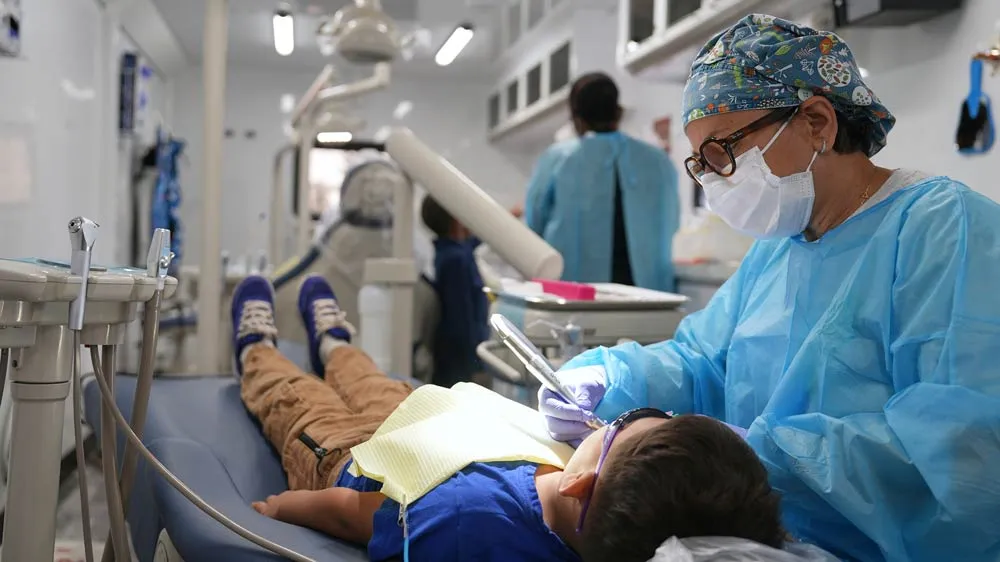August 11, 2017
Attitude & Lifestyle May Contribute to Skin Cancer Risk Among Latinos
READ TIME: 4 MIN.
As the Hispanic population in the United States continues to grow, the incidence of skin cancer among this population is growing too. Moreover, Hispanic patients are more likely to be diagnosed with the disease in its more advanced stages, when it's more difficult to treat.
Many Latinos, however, don't believe they're at risk, according to board-certified dermatologist Maritza I. Perez, M.D., FAAD, a clinical professor of dermatology at the Icahn School of Medicine at Mount Sinai in New York. "The belief that Hispanic people don't have to worry about skin cancer has existed among Latinos for generations," she says. "They hear it from their parents and grandparents, and then they pass this belief on to their children."
Exposure to ultraviolet radiation from the sun and indoor tanning beds is the most preventable skin cancer risk factor. Many Hispanic people, however, believe they're protected from the sun because they have darker skin tones, Dr. Perez says, and those who get sunburned don't realize that the damage to their skin is increasing their skin cancer risk.
As a result, Dr. Perez says, many Latinos don't take steps to protect themselves from the sun's harmful UV rays. Furthermore, she says, some Hispanic people go indoor tanning before spending time in the sun, under the false belief that a "base tan" will protect them. She advises all her patients, regardless of skin color, to stay out of indoor tanning beds and protect themselves from the sun.
Because skin cancer is most treatable when detected early and Latinos are more likely to be diagnosed with the disease in its advanced stages, Dr. Perez says, it's also important for this population to perform regular self-exams to look for new, changing or suspicious spots on their skin. People with skin of color are prone to skin cancer in unusual areas -- like on the palms of the hands and the soles of the feet, under the nails, and inside the mouth -- so she recommends that Hispanic patients be especially vigilant in performing skin self-exams.
When melanoma, the deadliest form of skin cancer, is detected and treated before it reaches the lymph nodes, the five-year survival rate is 98 percent. "Early detection is vital for skin cancer survival," Dr. Perez says. "And if you don't look for changes on your skin, you won't find them."
While the Hispanic population's attitude toward skin cancer plays a large role in the disease's incidence among that population, this group's access to dermatologic care is also an important factor, according to Dr. Perez. Many Latino families are uninsured or underinsured, she says, so they may be less likely to see a dermatologist for a skin cancer evaluation. Further, when Hispanic patients do visit the doctor, she says, skin cancer may not be top of mind during the visit, since the belief that these patients are not at risk for the disease is so pervasive.
To help combat these issues, the American Academy of Dermatology works to raise skin cancer awareness among the underserved Latino population through its Latino Outreach Program. In addition to providing free skin cancer screenings, this program aims to educate low-income Latino outdoor workers about skin cancer prevention and detection.
The AAD recommends that everyone stay out of indoor tanning beds and protect themselves from the sun's harmful UV rays by seeking shade, wearing protective clothing, and using a broad-spectrum, water-resistant sunscreen with an SPF of 30 or higher. The AAD also encourages everyone to perform regular self-exams to check themselves for signs of skin cancer and ask a partner to help them examine hard-to-see areas. Those who notice anything changing, itching or bleeding on their skin should visit a board-certified dermatologist.
While these recommendations apply to all patients, Dr. Perez says, it's especially important for Latino patients to understand their skin cancer risk, take steps to protect themselves and conduct regular skin self-exams. "Everyone -- no matter their skin color -- is at risk for skin cancer," she says, "so everyone should learn how to protect themselves from the sun and how to check their skin for suspicious spots."
For more information, visit aad.org or SPOTSkinCancer.org


